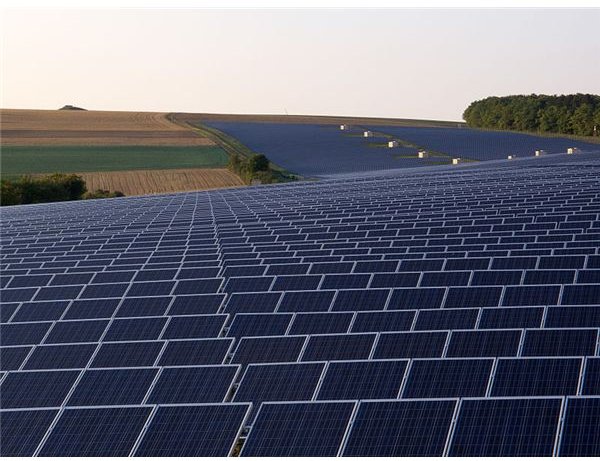Guide to Photovoltaic Cell (PV) Technology
Solar Energy
The Earth receives an enormous amount of energy from the Sun. Almost 174 petawatts of solar power reaches the upper atmosphere in the form of solar radiation. The sum of non-renewable energy sources could only provide us with half of this power. This is just a measure of the energy potential that we can exploit in order to cover our energy needs and ensure the existence of a cleaner environment and healthier ecosystems. Solar energy is one of the first energy sources discovered, and it is still one of the cleanest and safest.
For a better insight on solar power, visit the following links:
- History Of Solar Energy
- The Development of Solar Energy
- Advantages and Disadvantages of Solar Power
- Solar Energy Potential
Check the guide below for more details on solar energy:
Principles and Operation
Photovoltaic cell technology is based on a phenomenon called photoelectric effect in which solar energy is converted into electric energy. As soon as light photons hit the surface of a semi-conductive material (usually silicon), charge carriers (electrons and holes) are generated. The release of electrons is responsible for the subsequent current flow within the material’s plate structure. In order to increase conductivity, the semiconductor is usually doped.
The operation of photovoltaic cells, also known as solar cells, is based on this principle. Today several companies produce commercially available solar panels which consist of a large number of such cells.
However, photovoltaic solar panels should not be confused with solar thermal panels or collectors. The first are used to generate electric current from sunlight through the photovoltaic effect, while the second collect thermal energy from the sun and use it for water or room heating.
- Photovoltaic Modules vs Solar Thermal Collectors:Their Differences
- How does a Photovoltaic Cell Work?
- How do Solar Cells Work?
- Understanding PV System Layouts
- Operation,Orientation and Installation of a Silicon Monocrystalline PV Panel
- Off Grid Power - Photovoltaic System
- Commercial Photovoltaic Modules
- Solar Cells of Tomorrow
New Generation of Materials and Techniques
Although photovoltaic cells are widely available in the market today, their application potential is still limited by their low efficiency. The use of semi-conductive materials, mainly silicon, can only yield efficiencies that vary from 18% to 24 % for the normal monocrystalline silicon technology. The latter is considered to be better in terms of performance and cost compared to the multicrystalline silicon technology. These percentages indicate that the current solar technology cannot compete with the conventional use of non-renewable resources, and that’s why the solar industry is continually working on the improvement of performance and the lowering of production costs.
The new trend involves the use of organic materials and the development of new techniques suitable for low-cost and large-area production. However, the efficiency achieved so far is in the range of 10-18% approximately, which is significantly lower compared to the efficiency of conventional technology. Despite this fact, research is still in progress and those involved in the field are positive that both the efficiency and performance of photovoltaics will improve over time.
- Organic / Polymer Solar Cell
- Organic or Semiconductor-based Solar Cells?
- Why are Organic Cells Still Inefficient?
- New Solar Concentrator Cell is the Future of Solar Energy
- How Thin Film Solar Cells are Manufactured
- Infrared Solar Cells
Innovative Commercial Applications
The application potential of photovoltaic cells can only be limited by our imagination. Many of the applications that have already been developed involve the use of panels that collect the energy from the sun and then store it in batteries in the form of electricity. The goal is usually to set an electric motor into motion. In the case of solar cars, the area of panel installation is large enough to collect the light and the excessive energy is stored in heavy lead-acid batteries in order to provide constant supply of electric energy even during nighttime. The same principle applies to other mechanical or electronic devices and gadgets such as refrigerators, bulbs, computer, batteries, headphones and many more:
- Solar Panels for Battery Charging
- Solar Cars: Introduction
- Solar Cars: The Concept, Possibilities and Hindrances
- Solar Street Lights
- Solar Refrigerator
- Solar Lanterns
- Solar-Powered Hats
- 10 Amazing Solar-Powered Gadgets
- More on Gadgets
- Solar Powered USB Charger
- Solar Powered Computers
- Are Solar Powered Laptop Computers a Feasible Idea?
- Turanor: World’s Largest Solar Powered Boat
Devices that involve solar thermal panels such as water heaters and solar cookers work differently. As mentioned above, these devices absorb the highest amount of solar energy and then convert it into heat instead of electric energy.
The Future
The current applications described above are really fascinating, but what does the future hold for this technology? Will there be more interesting advancements in the field? What’s the potential as far as military and space exploration is concerned? Questions like these will continue to arise. Find some of the answers you may be looking for below:
- Solar Thermal Power Plants
- New Advancements in Solar Tech
- Advantages of Solar Energy as Power Source in Space Exploration
- New Focus on Solar Power for Military Applications
- Futuristic Solar Cars
- Can Photovoltaic Solar Panels Power a Computer Lab?
- The Problems and Challenges of Solar Power
Do It Yourself
Are you intrigued by the unlimited potential and the variety of applications? Learn how you can make your own solar party string lights and automatic tracker with simple and easy-to-find commercial circuits and panels:
References
- SolarExpert.Com
- Photovoltaic Cell Array in Thüngen/Bavaria, OhWeh
- News and Information about Solar Photovoltaic Technology, Alternative-Energy-News.Info
